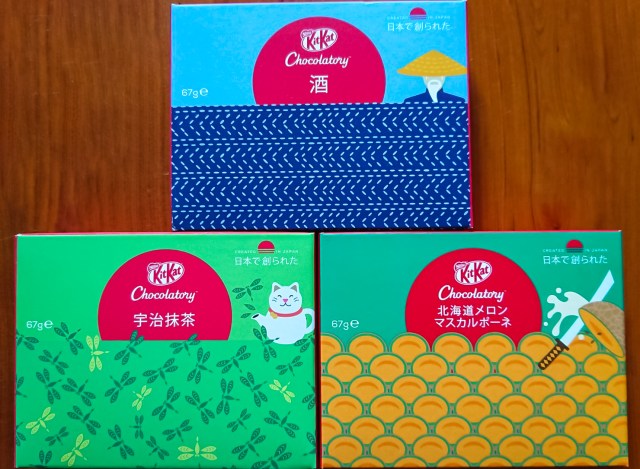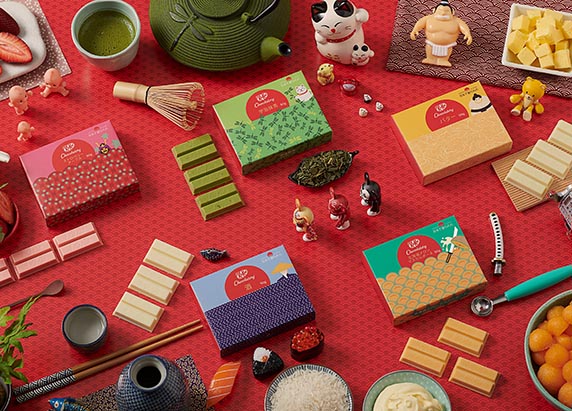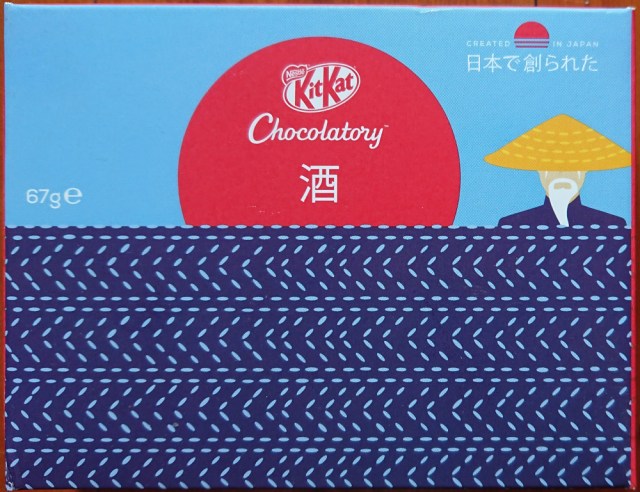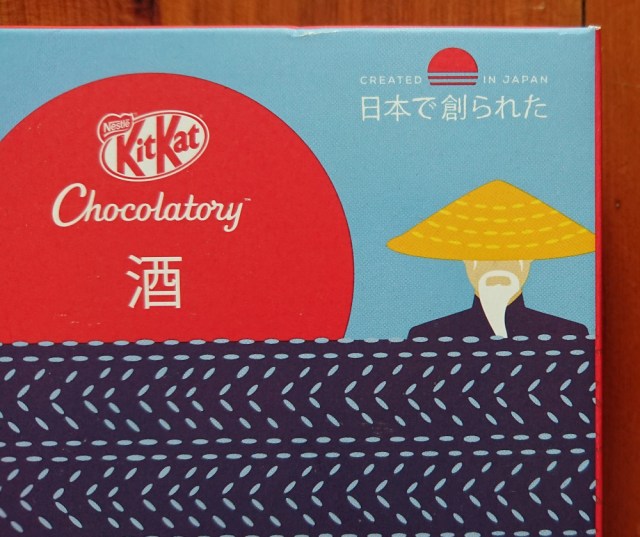Japanese sake KitKats feature controversial package design in Australia

Pssst, Nestlé — that character’s not Japanese and you’re playing into problematic Asian stereotypes.
Asian representation in the mainstream media has been sorely lacking over the years, and the struggle to move past stereotypical depictions has been another hurdle to overcome for members of the Asian community.
The stereotypical image of the Chinese kung fu master, for instance, is one that continues to pop up in the West as a catchall for the Asian mystique, but within Asia, there’s a clear understanding that this doesn’t represent all of Asia, but merely one nation within it.
That’s because within Asia, there’s a clear understanding that not all Asian countries are the same. In fact, using an often-seen image from one country to represent another can be seen as offensive, which leads us to the question…why did Nestlé Australia choose to do it?
The image in question appeared on one of the products in the “Created in Japan” series available exclusively at the KitKat Chocolatory in Melbourne. The collection consisted of five flavours: Butter, Hokkaido Melon & Mascarpone, Uji Matcha, Strawberry & Maple, and Sake.
▼ Nestlé Australia’s “Created in Japan” series
 Image: Nestlé Australia
Image: Nestlé Australia
This series features KitKat flavours that are usually only available exclusively in Japan. However, the boxes they’re packaged in have been specially designed for the Australian market, featuring Japanese icons such as a sumo wrestler, a samurai warrior, a maneki neko cat, a samurai sword, and…a Chinese rice farmer?

That’s right, the KitKat Chocolatory Sake flavour features a design that depicts what looks to be a rice field, as a nod to the fact that sake is made from rice. The image on the right-hand side of the box, however, is confusing, as it shows what appears to be a man with a long, thin white beard and moustache, wearing a conical hat and a top with a high collar.

To people in Japan, this image doesn’t look Japanese. Though conical hats like these are sometimes worn in the fields, it’s far more common to see farmers wearing baseball caps, cloth hats, or towels around their heads in Japan. What’s most unusual is the long, thin white beard and moustache, which conjures up images of Pai Mei, the kung fu master played by Chinese actor Gordon Liu in the Hollywood movie Kill Bill.
Kill Bill Vol. 2 - the scene with Beatrix buried alive
— Steph-Black Lives Matter (@stephanie9303d) May 1, 2021
Loved the old Bruce Lee movie vibes and Pai Mei pic.twitter.com/cYRu47or1e
Facial hair may be a common sight in some Asian countries, but not in Japan, where you could live a whole lifetime without encountering a single individual with a long, white beard like this one. Adding to the confusion is the fact that, like Pai Mei, the figure on the KitKat box wears an outfit with a stand-up mandarin collar, so-called as it was part of the uniform worn by mandarin bureaucrats in Qing-era China.
▼ The recipe for the chocolate inside the box may be “Created in Japan” but this image certainly isn’t.

We put the question out to expats in Japan, asking them whether they thought this image looked like a Japanese person, and this is what they said:
“Not at all. Unless it’s changed all of a sudden, during my 15+ years’ stay in Japan — three of which was in the sticks — I’ve never met, seen or heard of an old man with a sedge hat and a white beard like Master Pai Mei. If the question was about a “stereotypical Asian person”, then yes.”
“No. Not Japanese, but rather Chinese, because of the ’60s/’70s kung fu movie tropes.”
“It looks quite Vietnamese to me, a Vietnamese. Like an illustration from my elementary school textbook.”
“Not Japanese because of the hat (the traditional Japanese hat is way different) and the beard is not to be seen in Japan. Looks Chinese to me. The clothes reinforce the idea of a Chinese man with the Mandarin collar.”
“Nope. Vietnamese. I lived in Japan for almost twenty years and have travelled through Vietnam on two occasions. No question. Not Japanese in my opinion.”
“The hat looks south-east Asian while the beard makes me think Chinese. The overall effect makes me think ‘overconfident white person’s interpretation of a generic Asian’.”
When our Japanese reporters saw the image, this is what they had to say:
“Personally, the beard and clothes make it feel like it’s a Chinese sage.”
“I don’t think it’s Japanese. The high collar that covers the neck and the hat shape give off the impression of China.”
“In Japan, you wouldn’t sell a product with a red sun image on it like this because of its political implications.”
“It looks like a Vietnamese person.”
“Looks like a Chinese person. It also has the Chinese character for sake, which makes me think that even more.”
“From a distance, I get the impression that it’s Japanese because of the red sun image. But when you get closer, the “Japan” element decreases by 50 percent.”
“I wonder if it was made by a non-Japanese person who imagined Japan. That’s why “Created in Japan” was added as a supplement.”
So what about Nestlé Australia? We asked their Corporate Affairs Manager a series of questions about the design, including whether any Asian staff had been involved in its creation or if they had consulted anyone from Nestlé Japan or the local Japanese community before selling the product, and they simply said:
“I can confirm that this product has been deleted and there are no plans for it to be brought back at this stage.
It was certainly not our intention to cause offence and I have shared your concerns with our marketing team.”
While it’s true that the product was taken off the market in Australia recently, Nestlé Australia failed to explain the reason why it had been deleted. With demand for Japanese KitKats remaining strong around the world, it would be nice to see the Sake KitKat return to the market in Australia, and other countries too, but next time in more culturally appropriate packaging.
Source: Nestlé Australia
Featured image © SoraNews24
Insert images © SoraNews24 unless otherwise stated
● Want to hear about SoraNews24’s latest articles as soon as they’re published? Follow us on Facebook and Twitter!
Credit:




0 comments: